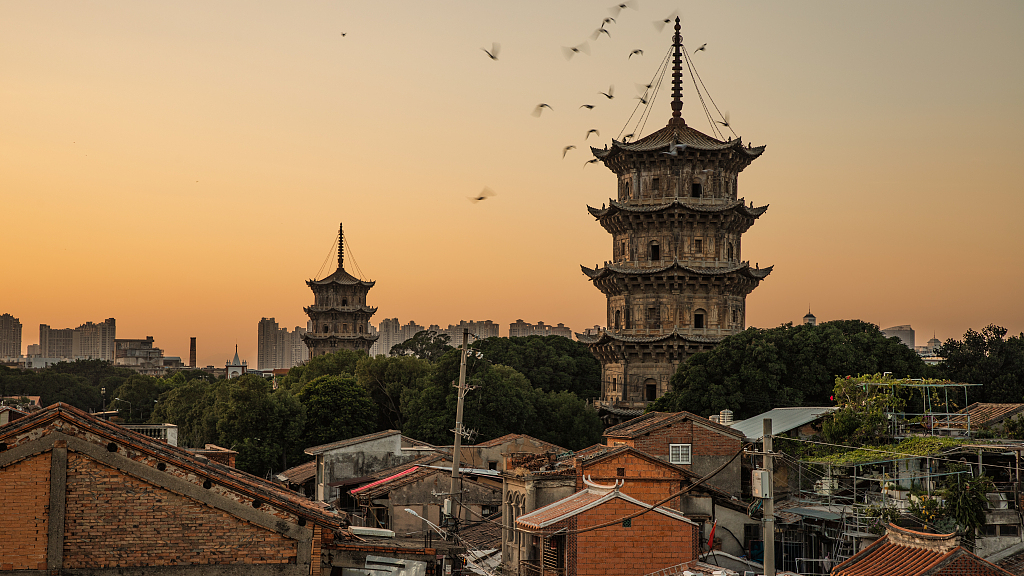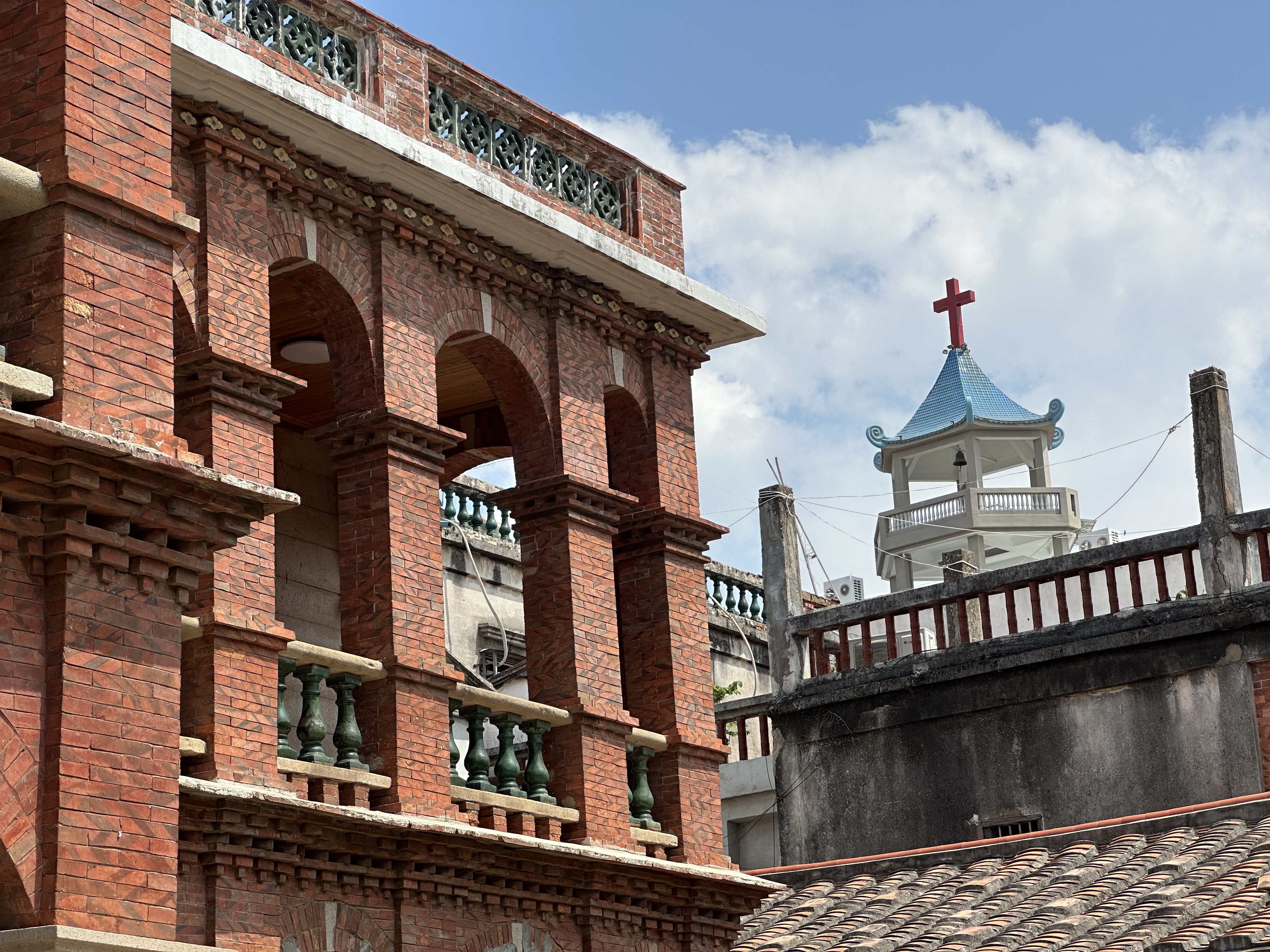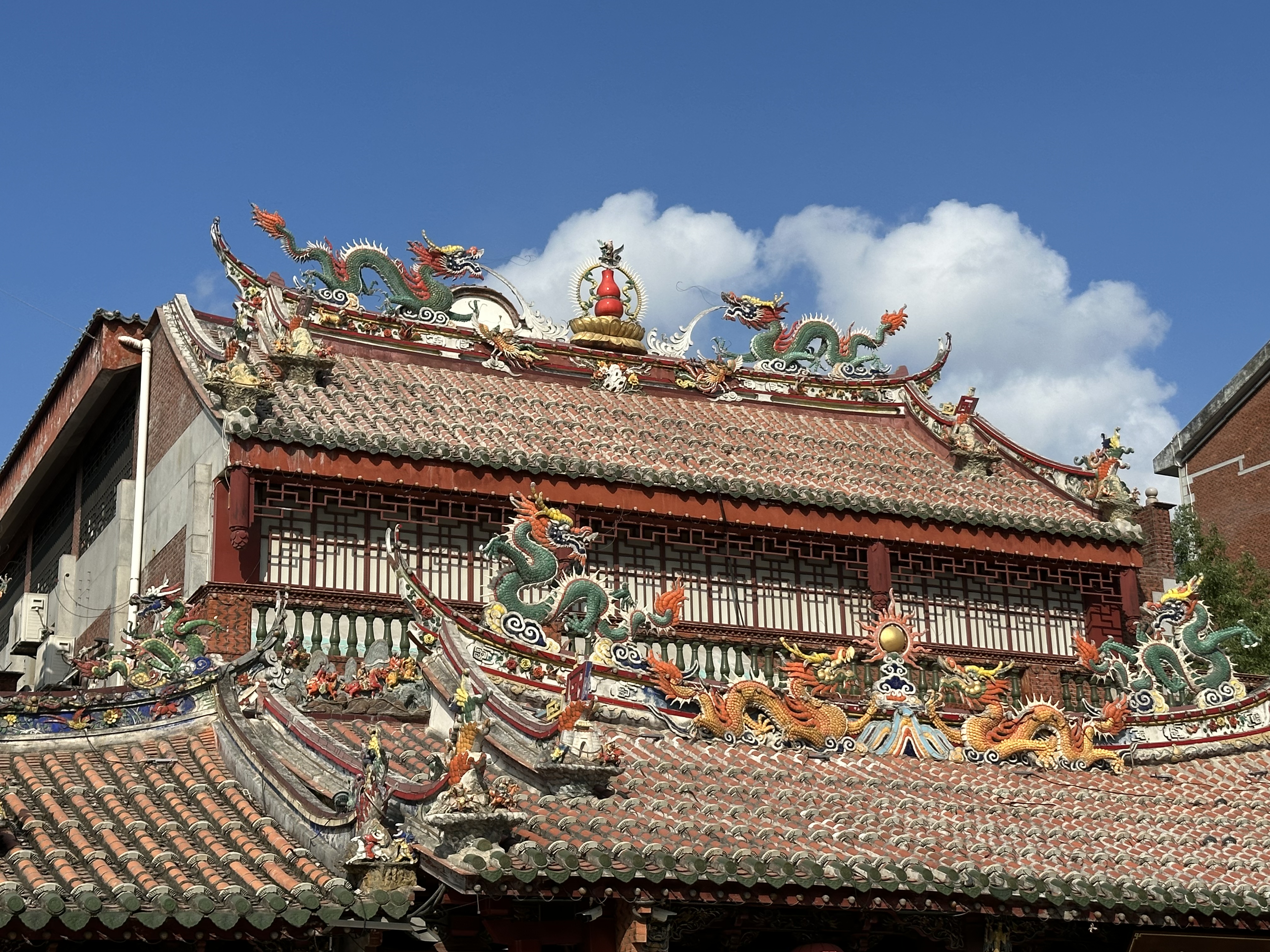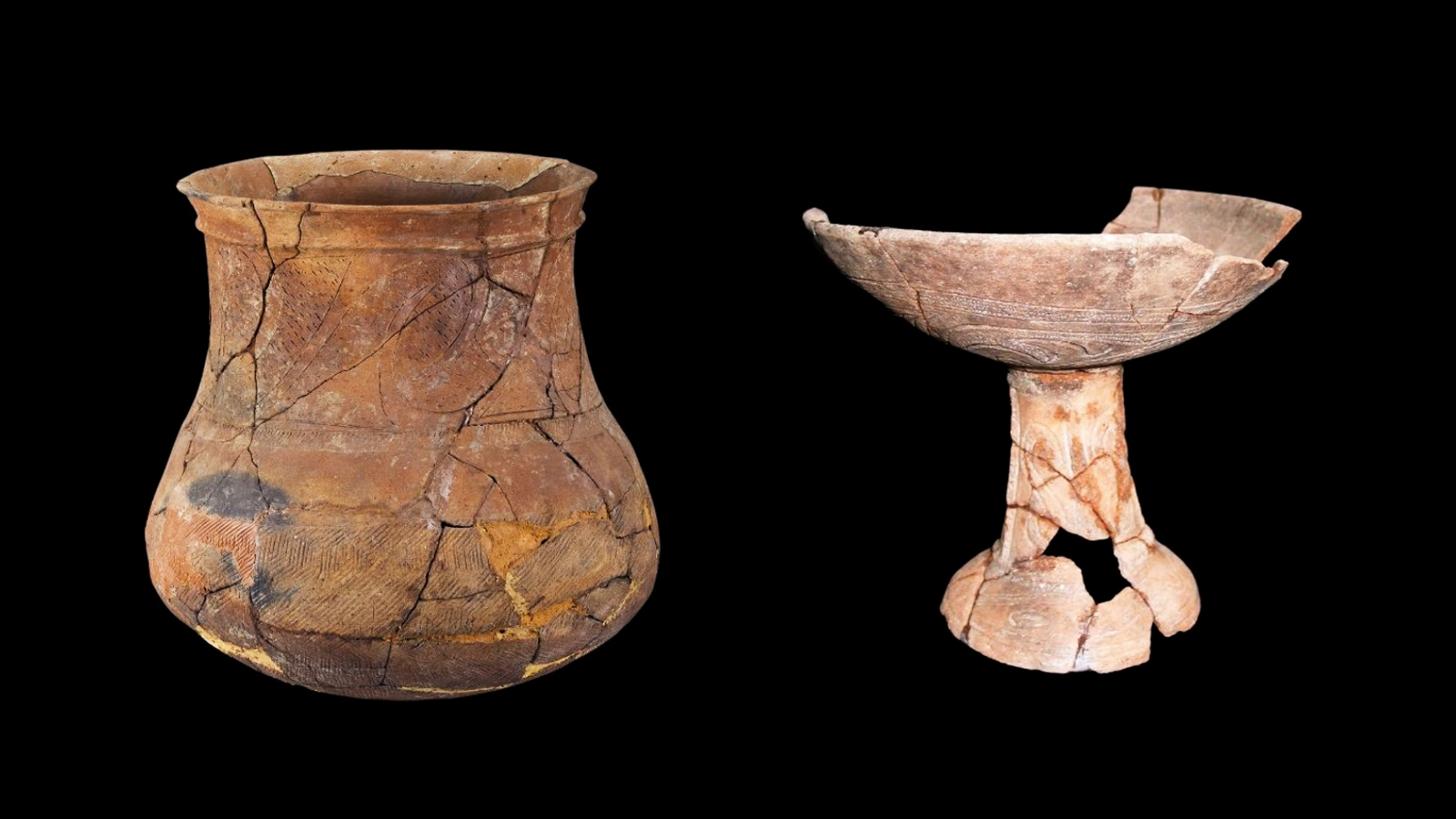
A file photo shows the Kaiyuan Temple in Quanzhou, Fujian Province. /CFP
A file photo shows the Kaiyuan Temple in Quanzhou, Fujian Province. /CFP
Quanzhou, located on the southeast coast of Fujian Province, is a city steeped in millennia of cultural heritage.
From the times of the Han Dynasty (202 BC-220 AD), the Silk Road extended all the way from Xi'an to Rome in Italy. After the decline of the Tang Dynasty (618-907), the economic center shifted southward and eastward, leading to the gradual flourishing of port trade along China's southeastern coast and the emergence of the Maritime Silk Road. Quanzhou, which had developed into a crucial port city, emerged against this backdrop.

A file photo shows a golden sunset reflecting a fishing boat moored at a port in Quanzhou, Fujian Province. /CFP
A file photo shows a golden sunset reflecting a fishing boat moored at a port in Quanzhou, Fujian Province. /CFP
During the Song (960-1279) and Yuan (1271-1368) dynasties, Quanzhou Port reached its zenith, engaging in close commercial ties with over 100 countries. Renowned Italian explorer Marco Polo lauded it as the "City of Light."
As this prominent port flourished over the ages as a global trading hub, Quanzhou attracted merchants from across the country and even around the world, bringing in diverse cultures and beliefs, leaving traces of historical landmarks.
Among these landmarks is Kaiyuan Temple. Founded in 686, Kaiyuan Temple is reckoned as the largest Buddhist temple in coastal southeast China.

A photo shows a traditional red brick building and the roof of a church in Quanzhou, Fujian Province. /CGTN
A photo shows a traditional red brick building and the roof of a church in Quanzhou, Fujian Province. /CGTN
Since the Tang and Song dynasties, amid increasing foreign exchanges, various religions, including Buddhism, Islam, Catholicism, Christianity, and Judaism, made their way to Quanzhou. At one point, Quanzhou had seven mosques for Islamic worship, and various venues for Buddhism and Taoism dotted the city, earning Quanzhou the moniker of "the museum of the world's religions."
In 1982, the Chinese government announced the first batch of national historical and cultural cities, and Quanzhou was among the 24 cities selected. The inspection team unanimously agreed on Quanzhou's inclusion, and praised Quanzhou as "outstanding, well-deserved, and beyond compare."
As of the end of 2022, cultural items from Quanzhou have been included in various levels of intangible cultural heritage lists, including six at the world level and 36 at the national level.

A photo shows the exquisite roof of Guandi Temple in Quanzhou, Fujian Province. /CGTN
A photo shows the exquisite roof of Guandi Temple in Quanzhou, Fujian Province. /CGTN
In order to preserve the history of the ancient city, Quanzhou adheres to the use of traditional materials and craftsmanship in street and lane renovations. Craftsmen of ancient architecture have been invited to participate in the restoration, ensuring that Quanzhou's distinctive architectural elements are preserved. This not only reflects an appreciation of Quanzhou's traditional culture, but also injects new vitality into this thousand-year-old city.






















